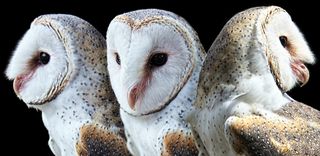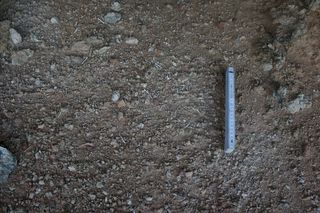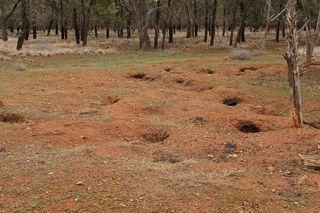
Looking Forward to the Past: What Fossils Tell Us About Extinction (Op-Ed)

This article was originally published at The Conversation. The publication contributed the article to LiveScience's Expert Voices: Op-Ed & Insights.
The impact of European settlement on Australia was so massive that many mammals disappeared before anyone noticed they were there, but fossils from the past 10,000 years offer excellent evidence of pre-European fauna.
A paper I published in Ecological Management and Restoration this month reviews just how informative these relatively young fossils can be.
When Europeans first came to Australia they cleared native vegetation, dammed and redirected water courses, introduced exotic livestock, pests and predators and generally made a mess of the place.
They also hunted native mammals for their fur and meat, to get rid of “pests” — and, sometimes, just for fun.
Consequently, Australia has the dubious honour of having the highest mammal extinction rate in the world over the past 200 years.
Many native species were lost so quickly that they became locally extinct:
Sign up for the Live Science daily newsletter now
Get the world’s most fascinating discoveries delivered straight to your inbox.

- The western mouse (Pseudomys occidentalis) once lived across southern Australia but now only lives in southern Western Australia
- Ringtail possums (Pseudocheirus peregrinus) lived on Eyre and Yorke Peninsulas when Europeans settled, but nobody ever noticed them alive
- Burrowing bettongs (Bettongia lesueur) used to live throughout Australia’s arid zone but now only occur naturally on a couple of islands off the coast of Western Australia.
This left conservation managers with the unenviable task of trying to restore degraded ecosystems with little knowledge of what to conserve.
Dedicated ecologists spend their lives doing fantastic work tracking and monitoring threatened or endangered species for as long as their funding allows, but the money usually runs out well before our animals give up all of their secrets.
Consequently, research that follows the life history of a species for more than five years or a generation are considered “long-term” studies. Though critical for understanding and managing landscapes, long-term ecological studies are rare.
But many biologists appear unaware that fossil accumulations from the past 10,000 years (the Holocene) can easily extend their long-term study by orders of magnitude.
The importance of the Holocene
Holocene fossils (sometimes called subfossils) are usually collected by predators such as owls and other raptors (birds of prey). They usually eat their prey whole but can’t digest fur and bones so they squash them into a small pellet which gets regurgitated.

Thousands of bones can accumulate at their roosts. All we have to do is find a roost and we can collect huge numbers of fossil bones that will tell us what animals once lived in the area.
If we find some bones big enough to radiocarbon date, we can work out how old they are and interpret the environmental conditions the prey animals lived in before they became bird food.

By far the most important thing that Holocene fossil deposits can tell us is which animals lived where before Europeans arrived — baselines that we can use to measure biodiversity loss against.
I cannot stress enough how important it is to have baselines that show where native mammals lived before Europeans arrived. These fossils provide the only physical evidence of where and how many native species once lived in a region.
By comparing the fossil and present day diversity of native mammals I found that 30-80% of mammal diversity across Australia has been lost since European arrival.
Learning from the past
We may never be able to recreate late Holocene communities, but they provide an invaluable guide to the number and type of species that once lived in a region, how common or rare each species was and where we might be able to re-introduce threatened or endangered mammals (potentially saving them from extinction).
Many small mammals that are now very rare or locally extinct on mainland Australia perform valuable ecosystem services by:
- spreading seeds and spores and helping them germinate and grow
- pollinating flowers
- digging holes that aerate and add organic matter to the soil, improving the soil’s ability to absorb and retain water.
Exotic species such as rabbits also dig, but they don’t improve soils anywhere near as well as native mammals. So in areas where native mammals are locally extinct, soils quickly become drier, dustier, more compacted and less fertile, reducing the productivity of the whole ecosystem.

Restoration ecology is the only way to reverse these changes, but it’s really expensive and rarely reproduces the ecology that was lost. Needless to say, it’s much cheaper to preserve a functioning ecosystem than trying to re-assemble one!
There is so much we can learn about Australia’s pre-European ecosystems by simply scratching the surface in caves, shelters and cliff overhangs. Next time you see an owl or eagle (or other bird of prey), remember that the bones of the animals they eat for lunch today will probably end up on the floor of a cave and possibly become preserved.
In years to come those bones might be found by palaeontologists, who will use them to interpret today’s ecology. What do you think they’ll find?
It’s up to us to make sure they find a range of native mammals – not just house mice and black rats.
Matthew McDowell receives funding from the Australian Research Council
This article was originally published at The Conversation. Read the original article. The views expressed are those of the author and do not necessarily reflect the views of the publisher. This version of the article was originally published on LiveScience.
